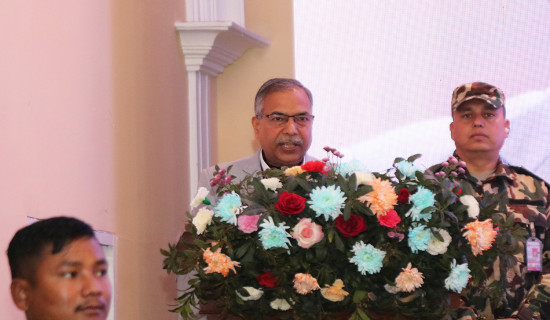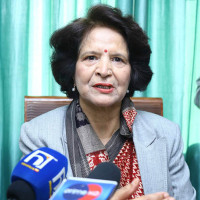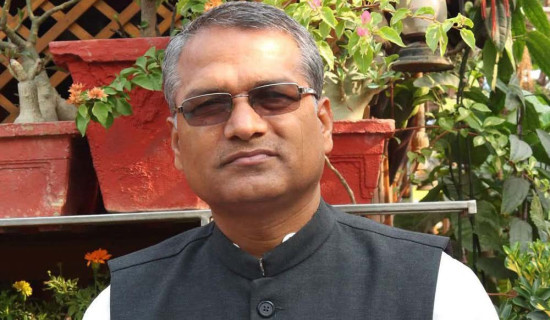- Saturday, 27 December 2025
Democracy Day
Women's Contribution To Democratic Upheavals
While discussing women's participation in nation-building and the democratic process in Nepal, it is necessary to recognise their historic role in the Nalapani War. Serving as warriors in the battle of Nalapani in Dehradun (currently located in Northern India) in 1815, Nepali women fought alongside their male counterparts in a heroic resistance against the British army. Despite facing adversaries with the better equipped, trained, and outnumbered British army, women courageously stood their ground, contributing to the defence of their homeland.
This historical event underscored their pivotal role in shaping the nation's history and identity. There exists a profound link between democracy and the women's movement in Nepal. Women have actively advocated for democracy, while democracy, in turn, has supported the movement from a rights-based perspective. Nepal's women's movement dates back to 1942 with the Yogmaya revolution. Yogmaya was imprisoned for her demand of "Dharma Rajya" (nation with justice) under the Rana rulers. She, along with more than 60 other women, jumped into the Arun River, demanding women's freedom and social reform in the country. It was a symbolic protest against the despotic Rana rule.
Organised movement
The first women’s organisation, Nepal Mahila Sangh (Nepal Women Association), was established under the leadership of Mangaladevi Singh in 1948, marking a turning point in the emancipation of Nepali women reeling from social, political, economic, and cultural discrimination. Other notable women activists, such as Sahana Pradhan and Snehalata, also joined the association. Its primary objective was to secure voting rights for women, which were eventually granted in 1954. Notably, Sahana Pradhan made history in 1954 by becoming the country's first elected woman representative, serving as the ward president of Ward No. 8 in Kathmandu. Despite her absence from active politics later, her husband, Manamohan Adhikari, became the Prime Minister in 1994.
In 1990, women played a significant role in the democratic movement that ended the 30-year rule of the party-less Panchayat, ushering in multiparty democracy with constitutional monarchy. Women from various backgrounds, including those from prominent political families and rural communities, actively participated in these movements.
Quota and participation
Under the new democratic set-up, women's socio-economic status was elevated. Several female politicians held ministerial and other important positions, shaping the political and administrative landscape of the country. The 1990 Constitution introduced a groundbreaking provision—a 5 per cent reservation for women—that aimed to enhance women's participation in politics. Initially intended for women who faced challenges competing with men in politics, this reservation system eventually increased their participation. Even seasoned politicians like Sahana Pradhan and Shailaja Acharya received electoral tickets within this 5 per cent quota. Ever since, it has been a gradual evolutionary process that has finally reached the point of committing to a 33 per cent quota for women in parliament.
The 1990 political change also enhanced the growth of the private sector, non-governmental organisations, rights groups, and other civic associations. Women's involvement in various state mechanisms notably surged, bolstering their entry into the vital organs of the state. A plethora of non-governmental organisations emerged, many dedicated to advancing women's rights and equality. Women's representation in the media sector also grew dramatically, boosting them to fight for structural changes in society. Additionally, the issue of women's inheritance rights was prominently raised.
The ten-year Maoist insurgency (1996–2006) had a significant impact on the country, diverting the development budget towards security and preventing local elections for over two decades. This period created a substantial leadership gap across all sectors, particularly in politics. Despite the disruption, it was a crucial time for women's empowerment. The participation of women as combatants in the Maoist armed movement challenged traditional gender norms, showcasing that women could also wield weapons. In 2005 (B.S. 2062), the Royal Nepali Army amended its recruitment policy to allow women to compete freely in combat roles, whereas previously, they were restricted to technical positions. In conflict situations, while men often joined the war or fled, women took on diverse responsibilities, from household chores to agricultural work and even handling corpses, a shift from traditional gender roles where such tasks were primarily assigned to men.
Following the political upheaval of 2006 (2063 B.S.), Nepal underwent a significant transformation. The CPN-Maoist joined peaceful politics and emerged as the largest political force in the first Constituent Assembly in 2008. The interim constitution prominently highlighted gender equality, stressing the imperative of women's involvement across all tiers of government. In accordance with this principle, the Constituent Assembly Election Act 2063 stipulated a minimum 33 per cent representation for women in the CA. This provision aimed to guarantee the participation of women in political decision-making processes.
Equal citizenship status
The House of Representatives, which was restored following the 2006 people's uprising, declared a provision to ensure 33 per cent female participation in all state structures on May 30, 2006 (Jestha 16, 2063). Lawmaker Bidyadevi Bhandari spearheaded the parliamentary motion, which was seconded by MPs Kamaladevi Pant and Narayan Prakash Saund (NP Saud). The proposal, registered as a matter of urgent public importance in the Parliament Secretariat, emphasised several key objectives. These included ensuring that children could acquire citizenship under either the mother's or father's name, aligning with the goal of promoting equal participation.
Additionally, it sought to guarantee the representation of at least one-third of women in all state structures and called for the repeal of all discriminatory laws.
It underscored the necessity of ending violence against women and aimed to achieve equal citizenship status for women.
The rationale for the discussion was explicitly stated as the imperative to secure equal status for women as citizens. Based on this motion, the Constituent Assembly Election Act guaranteed 33 per cent female participation in both constituent assembly elections. The essence of this commitment is echoed in the 2015 Constitution of Nepal, leading to the formulation of relevant laws or ongoing legislative processes. These are no small feats, but women's struggle for equal participation in the key organs of the state, crucial decision-making processes, and a life of dignity and happiness goes on.
(The author is Executive Director of Media Advocacy Group.)




-square-thumb.jpg)












